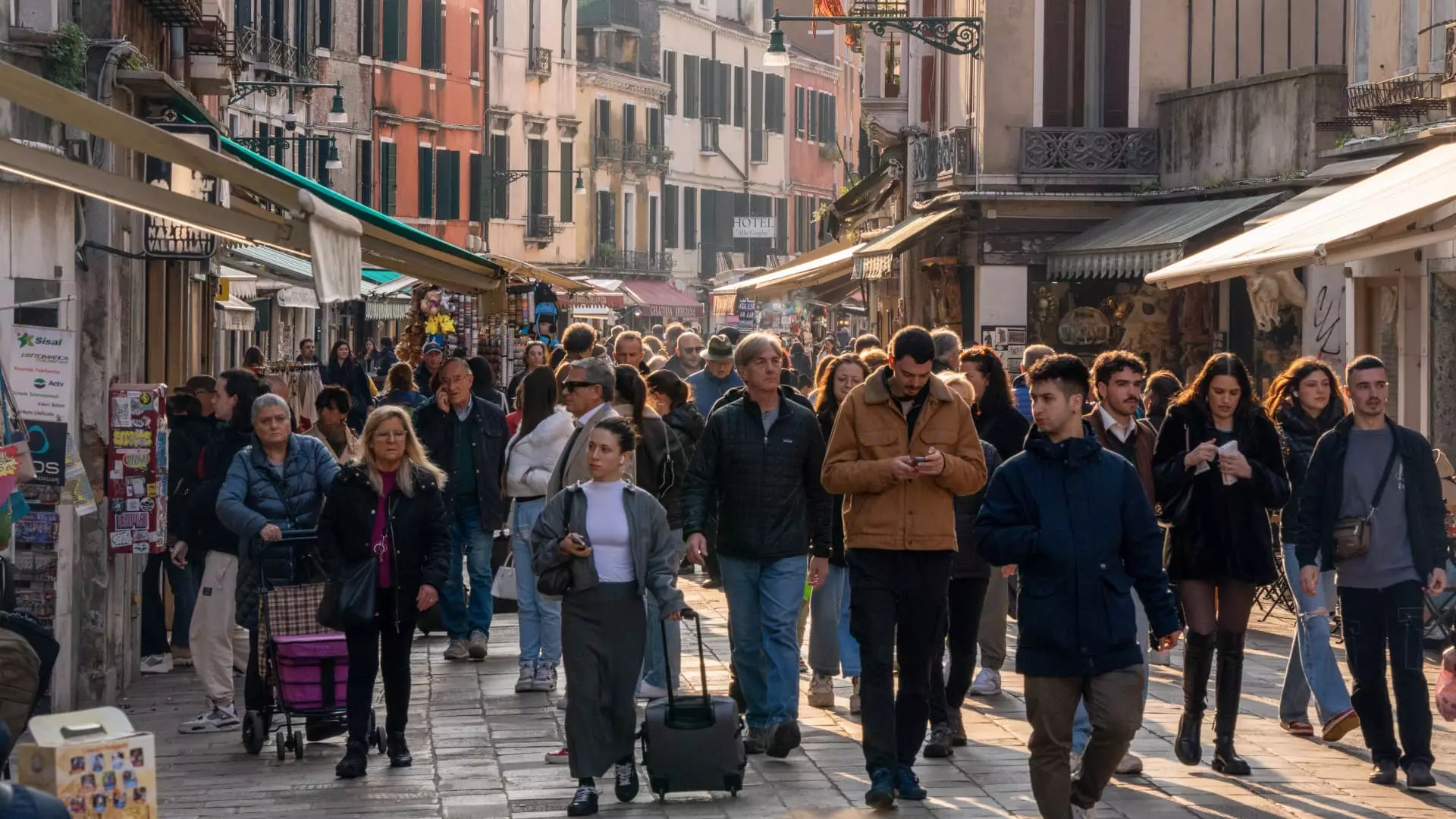As boat drivers in Bellagio, Lake Como, Italy, begin to voice their frustration over the influx of tourists in the region, it becomes increasingly evident that Italy is facing a significant challenge in managing the overwhelming number of visitors. The picturesque lakeside resort, frequented by celebrities like Taylor Swift and Travis Kelce, is struggling to cope with the sheer volume of people crowding its streets and amenities. The situation has become so dire that even basic tasks like traveling a short distance can take an unreasonably long time due to traffic congestion and infrastructure limitations.
While tourism is a significant contributor to Italy’s economy, generating substantial revenue and creating job opportunities, the country is finding it difficult to strike a balance between benefiting from tourism and preserving its cultural heritage. With 60 million tourists flooding the country annually, Italy has seen a surge in travel and tourism activities, accounting for a sizeable portion of its GDP. However, the strain on historical landmarks and fragile structures due to the overwhelming number of visitors has led authorities to implement measures like entry fees and visitor restrictions to safeguard these treasures for future generations.
One of the most pressing issues arising from the tourism boom in Italy is the shortage of skilled hospitality staff to cater to the needs of travelers. Regions like Marche and Sardinia are facing a dearth of chefs, waiters, and seasonal workers, making it challenging to provide adequate services to the growing number of tourists. This scarcity in the workforce poses a threat to the overall visitor experience and highlights the need for strategic workforce planning and development to sustain the tourism industry in the long run.
Despite the overwhelming crowds and logistical challenges, Italy continues to offer reasonably priced dining options and local delicacies to visitors. The affordability of food and beverages, including espresso, croissants, and regional wines, provides travelers with an opportunity to savor authentic Italian cuisine without breaking the bank. Even renowned establishments like Trattoria Milanese and Camparino in the Galleria offer quality dining experiences at relatively affordable prices, allowing guests to indulge in local flavors without exorbitant costs.
Navigating through the bustling streets and narrow roads of Italy has proven to be a daunting task for tourists, especially with limited taxi services and transportation options. The ongoing debate surrounding the legality of ridesharing platforms like Uber has further complicated the transportation landscape, with licensed taxi drivers expressing concerns over potential job losses and unfair competition. The clash between traditional taxi services and modern ride-hailing technology reflects the broader challenges faced by Italy in adapting to evolving consumer preferences and demands in the tourism sector.
The Quest for Authentic Experiences
Despite the chaos and obstacles associated with being a tourist in Italy, travelers continue to seek out authentic cultural experiences and opportunities to explore the country’s rich heritage. From admiring iconic artworks like Da Vinci’s “Last Supper” in Milan to dining at exclusive venues favored by celebrities like George Clooney, visitors are willing to endure challenges and plan meticulously to partake in unique, once-in-a-lifetime experiences. The allure of Italy’s historical landmarks, culinary delights, and vibrant lifestyle transcends the inconveniences faced by tourists, underscoring the enduring appeal of the country as a premier travel destination.


Leave a Reply